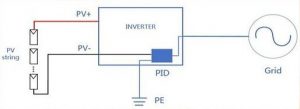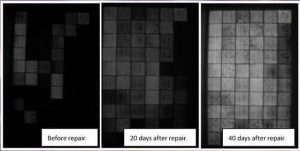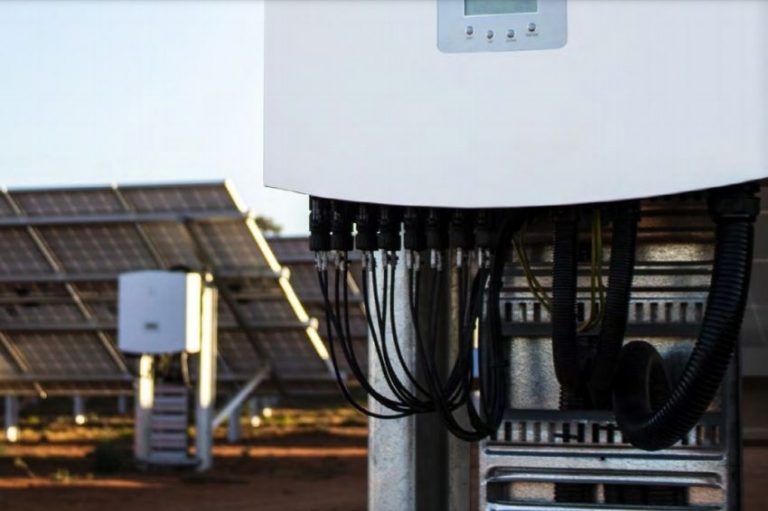PID (potential induced degradation) is a problem that affects photovoltaic modules mainly in centralized or minigeneration plants, which use long strings, with many modules in series.
The use of long strings causes the modules to be subjected to electrical potentials of great magnitude in relation to the earth, which can trigger the degradation process.
In summary, potential-induced degradation is a phenomenon that affects crystalline photovoltaic modules and leads to deterioration and gradual reduction in efficiency. Degradation can reach 30% (relative to initial power) or more after a few years.
Some module manufacturers are already adopting measures that can minimize or practically eliminate the PID effect on modules in most applications.
Even so, the high DC voltages present in the strings of medium and large solar plants are a factor that favors the occurrence of the phenomenon. At the same time, some inverter manufacturers are developing anti-PID features in their equipment.
In photovoltaic plants using inverters with galvanic coupling, PID can be avoided reliably and without complications by grounding the negative pole of the string. This means that all modules have only positive potential, that is, the potential difference between any module and ground will always be positive – which avoids the PID effect.

However, in photovoltaic plants that employ transformerless inverters (which are almost all plants currently) some care is necessary to allow the negative pole of the string to be grounded.
These precautions are mainly the presence of a current leakage detection system to the earth, carrying out an insulation test between the poles of the string and the earth and the absence of connection of the neutral conductor to the transformer (on the inverter side) .
If it is not possible to avoid grounding the neutral on the inverter side, it is recommended to use an exclusive isolating transformer for the connection between the inverter and the coupling point with the electrical grid.
The solution used in some more modern inverters is a PID effect reversal system. This solution applies a positive voltage between the photovoltaic string and the ground during the night, allowing the repair of damage caused during the day by the PID effect.
The advantage of this anti-PID method is that it can be used in any type of photovoltaic system, regardless of the way it is connected to the electrical grid (with or without the neutral conductor).

The figures below show results of the anti-PID system described above. The first figure illustrates a damaged photovoltaic module.
Damage is perceived by the absence of light in the image produced by the reverse electroluminescence test. The second image shows the state of the module after 20 days of regeneration. The third figure shows the recovered module, with the PID effect reversed.

The following table illustrates the electrical characteristics of the photovoltaic module used in the experiment in the previous figure under these three conditions: before repair, after 20 days and after 40 days (module completely regenerated).
The PID effect recovery system is important mainly in minigeneration or centralized generation plants that have long strings and work with high voltages on the DC side. To a lesser extent, the effect may also occur on small plants.
Although the latest photovoltaic modules are sold with the promise of being anti-PID, the presence of an anti-PID system in inverters is very important to prevent or definitively eliminate the degradation of photovoltaic modules over time.
The lack of protection against the PID effect can cause premature aging of photovoltaic modules, resulting in significant economic losses over the years.

















